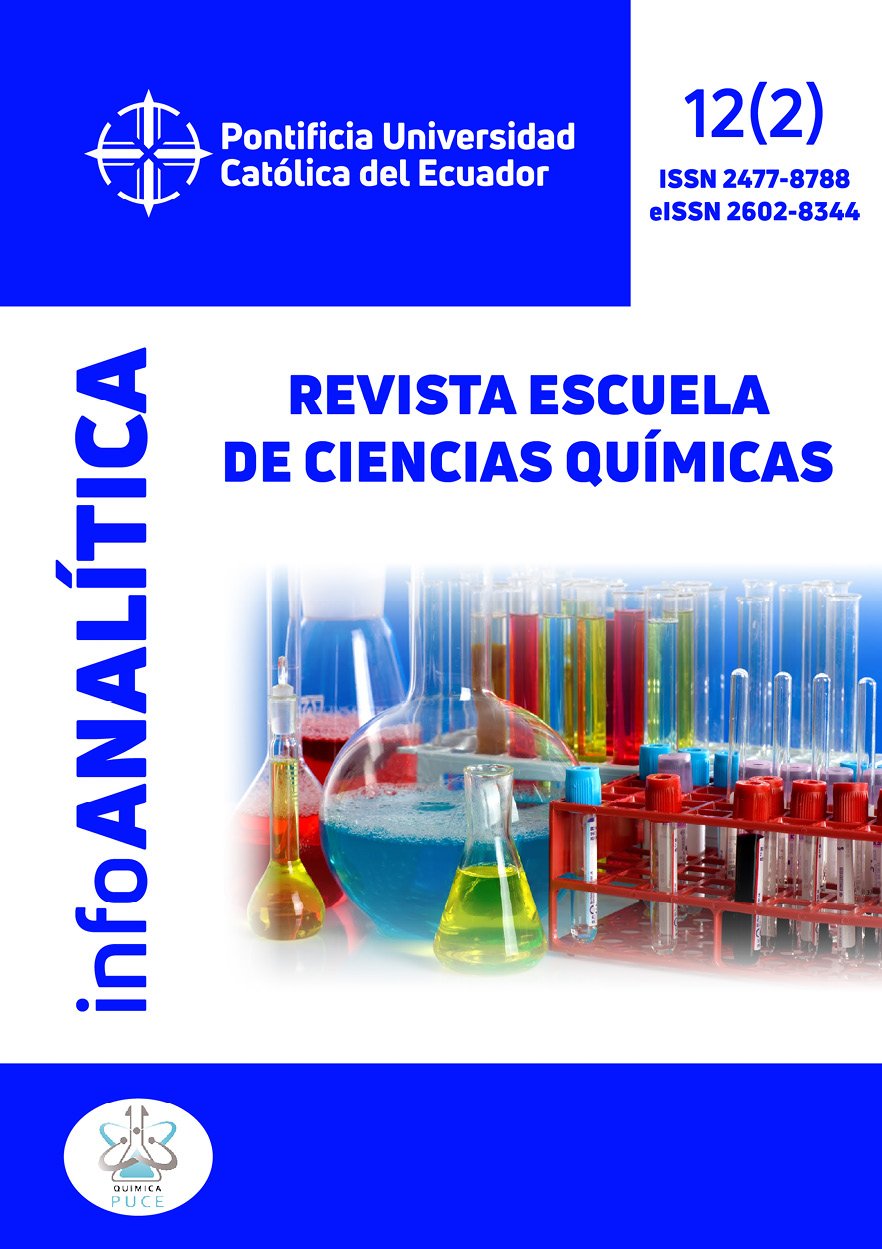COMPARATIVE STUDY OF IRON FORTIFICATION LEVELS IN DIFFERENT BRANDS OF NOODLES SOLD IN ECUADOR
Main Article Content
Abstract
This study focused on evaluating the iron content (Fe2+) in 51 samples of noodles in various shapes and prices, corresponding to 20 brands marketed in Ecuador. The AOAC 944.02 method, “Iron in flour. Spectrophotometric method,” was employed and validated for assessing iron in noodles. Statistical analysis showed that the diverse shapes and price ranges of noodles did not significantly influence iron content. However, a significant difference in iron content (p<0.005) was observed among noodles from different origins (Ecuadorian, Peruvian, and Italian). To compare iron content, the range of 37-73 mg of ferrous fumarate/kg established by Ecuadorian regulations for wheat flour fortification was utilized, revealing that noodles marketed in Ecuador contribute approximately 4-89 mg of Fe2+/kg. Furthermore, all 41 samples declaring iron fortification in their ingredients list indeed contained iron, yet only 7 fell within the reference fortification range for wheat flour as per Ecuadorian regulations. The specific regulation for noodles is governed by INEN 1375, which currently lacks specific iron values, underscoring the need to update these guidelines to include specific parameters for iron fortification. This update will ensure that both domestic and imported products meet established standards of safety and nutritional quality.
Downloads
Article Details
- The authors agree to respect the academic information of other authors, and to assign the copyrights to the journal infoANALÍTICA, so that the article can be edited, published and distributed.
- The content of the scientific articles and the publications that appear in the journal is the exclusive responsibility of their authors. The distribution of the articles published in the infoANALÍTICA Journal is done under a Creative Commons Reconocimiento-CompartirIgual 4.0 Internacional License.
References
AOAC International. (2016). Official methods of analysis of AOAC International. Association of Official Analysis Chemists International.
Britannica, T. E. (2023). “Pasta” | Britannica. Encyclopedia Britannica. https://www.britannica.com/topic/pasta
Campoverde, R. (2018). Un análisis del mercado de pastas en el ecuador. “Carácter”. Revis-ta Cientifica de La Universidad Del Pacifico ISSN, 2602-8476, 6(1). https://doi.org/10.35936/caracter.v6i1.37
Changing Markets Foundation. (2018). Food Fortification in Mexico. Proyecto Alimente, 5–35.
Council of the European Union, & European Parliament. (2006). Regulation (EC) No 1925/2006 of the European Parliament and of the Council of 20 December 2006 on the addi-tion of vitamins and minerals and of certain other substances to foods. Official Journal of the European Union. https://op.europa.eu/en/publication- detail/-/publication/3f4a1a6e-a2f1-4bab-8a1f-89d2e3b6d9dc/ language-en
GFDx. (2023). Global Fortification Data Exchange. Https:// Fortificationdata.Org/#top.
MSP. (2014, December 16). Reglamento Autorización Publicidad Y Promoción Alimentos Procesados. www.lexis.com.ec
MSP & Coordinación Nacional de Nutrición. (2012). Implementación del Sistema de Monito-reo Interno del Programa de Fortificación de Harina de Trigo. https://aplicaciones.msp.gob.ec/salud/ archivosdigitales/documentosDirecciones/dnn/archivos/ MANUAL%20DE%20FORTIFICACI%C3%93N%20DE%20 HARINA%20DE%20TRIGO.pdf
National Institutes of Health. (2022, April 5). Iron. (NIH).
Noboa, G. (2011). Texto Unificado de Legislación Secundaria del MAG, Libro II. www.lexis.com.ec
Zapata, M. E., Camoletto, S., & Torrent, M. C. (2010). Estimación del contenido de hierro, ácido fólico, tiamina, riboflavina y niacina en alimentos elaborados con harina de trigo enri-quecida. Revista Española de Nutrición Comunitaria, 16(2), 77–82. https://doi. org/10.1016/S1135-3074(10)70020-X

